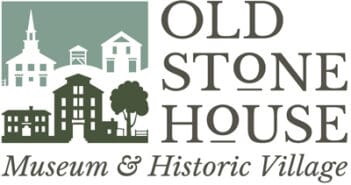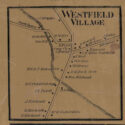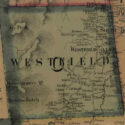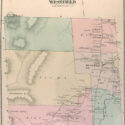Town History:
From the Vermont Historical Gazetteer, edited by Abby Maria Hemenway. Orleans County – Westfield Chapter: By Don A. Winslow. Published by Claremont Manufacturing Co, 1877. Pgs 343-350.
Westfield was granted in 1780, to Daniel Owen “and associates.” All, or nearly all, of the grantees resided in the state of Rhode Island; but one, Thomas Burlingame, ever lived in town, and he but a few months. The town was surveyed by Gen. James Whitelow of Ryegate, in 1780. It seems no attempt was made to settle the town for nearly 20 years after the charter was granted. The charter is dated May 15, 1780, and is signed by Gov. Chittenden, at Arlington, Bennington County.
It appears that not much attention was paid to either of the conditions of the charter, for it was at least 14 years after the Revolutionary war, before any settlement was attempted. The first white man who ever settled in Westfield was Mr. Jesse Olds. In the year 1798 he left the state of Massachusetts (what town I have not been able to learn), entered the unbroken wilderness, and began clearing on what is now known as the “Morse place” on West Hill. For nearly a year this family lived there, with not another human being nearer than North Troy, 12 miles distant. Their nearest neighbor south was at Craftsbury, 20 miles distant.
The next year, 1799, William Hobbs, Antony Burgess and John Hartley, came to town with their families. Mr. Hobbs settled on what is now known as the “Bull place”- Mr. Burgess on what is called the “Brown place” and Mr. Hartley began on the “Lombard Farm,” on the North Hill. These four families constituted the population of Westfield for about two years.
At this period, 1802, there was no grist-mill nearer than Craftsbury. Mr. Hobbs used to take a bushel of wheat on his back, and walk on snow-shoes to mill and back- making a distance of 40 miles in two days. In the course of a year or two his boys grew up so that he fitted up a couple of moose-sleds, and, taking a bushel and a half each, they drew 3 bushels to mill. This was considered a great step towards the convenience of civilized life.
Either in 1802 or ’03- I am not certain which- the first saw-mill was built. Previous to this there was not a house in town that could boast of a board on it. The floors were made of logs, either split of hewn-flat, and the roofs were covered in bark. The walls were of logs, the fire-place occupying nearly the whole end of the house, was built of two stones, and was spacious enough to hold at least a half a cord of 4-foot wood.
A few proprietors of Westfield wishing to encourage the settlement of the infant town, made a grant of a tract of land to a Mr. Taft of Montague, Mass., on condition that he would build a saw-mill on the land… The mill was built about 1803, 30 or 40 rods above the bridge. It was in operation but a short time, having burned accidentally, apparently; though the owner was strongly suspected of bringing about the “accident.”
In the Spring of 1804, the little colony of Westfield received a large accession- Capt. Medad Hitchcock from Brimfield Mass. moved into town with his three sons, Thomas, Heber and Smith, and settled on the flats where the village of Westfield now is. It will be noticed that previous to this, the first settlers pitched, with but one exception, on the highlands in the west part of the town. In comparing the rich, fertile meadows that we see to-day in the eastern part of the town, with the stony soil on the hills, where the first settlers began, we are apt to think they made a serious mistake in beginning where they did; but the fact was the highlands were much lighter timbered than the low lands, easier cleared, and for the first year or two producing better crops.
The arrival of Capt. Hitchcock and his sons gave new impulse to the town. They brought some property and soon cleared a large tract of land. He built a log house. The next year, he built a large framed barn which is still standing- the oldest frame in town- and has served for church, town hall, school-house, fort, and barn for nearly 70 years, and seems to be good for half a century longer. In the course of a year or two, Capt. Hitchcock erected a saw-mill. His son, Thomas, about the same time, built a grist-mill. These mills supplied a want that had long been severely felt. The settlers had been obliged to carry all their grain, either to Craftsbury or Richford, and frequently on their backs, or it was pounded in large mortars.
Captain Hitchcock was born in Brimfield, Mass. He seems to have been a man of some influence and had some property. His arrival in Westfield gave new impulse to the prosperity of the little town. Situated near the center of the habitable part of the town, his house became a sort of public house and he seems to have largely enjoyed the esteem and confidence of his neighbors. He represented the town for several years and held various other offices of trust and responsibility. He died in 1820, leaving three sons and five daughters.
In the year 1806, the main road from Westfield to Lowell was laid out very near where the present stage coach road runs. This was a great convenience to the inhabitants, as previous to this the only road leading to Craftsbury rain over the West hill. The old road crossed the mill-brook near Henry Miller’s house and went directly to “Bull place” then turned south to near where Nathaniel Hoyt lives, thence on to a little to the right of John Brown’s house and down into Lowell, coming out, if I have been rightly informed, near the old “Woods’ place.” A more tedious, uncomfortable route, could not have been discovered.
The early settlers of the town, amid all their hardships and privations, did not neglect the education of their children. It seems that as early as 1806, there were two schoolhouses in town; not the comfortable structures we see today in our country, but log-houses, covered either with bark or rough boards. The first school house was built on the West hill, on Mr. Olds’ place- since known as the Morse place. The first teacher was Sally Hobbs. This, I think, was in 1804-’05. The next school-house was built about 1806, on the flat and about 6 or 8 rods east of where the present academy stands. Mrs. Thomas Hitchcock was the first teacher.
The period between the years 1806 and 1812, appears to have been prosperous and flourishing to the little settlement. Men with industrious habits and some capital settled here, among whom may be mentioned James Brown, Caleb Hitchcock, Elisha Hitchcock, and Roswell Lombard and some others. The worst difficulties incident to life in the wilderness seemed by the sturdy industry and fortitude of the inhabitants to have been overcome. The forests were rapidly disappearing before strong arms and resolute hearts; good and comfortable buildings were erected in place of rude cabins of an earlier period. Property was rapidly increasing in value and the comforts and some of the luxuries of civilized life were secured and enjoyed. In 1810 the census reported 149 inhabitants in town.
The prosperity of Westfield was seriously checked- as also was that of the adjoining towns- by the war of 1812. Living so near the frontier of Canada, the people did not escape the general feeling of alarm and insecurity that pervaded a great portion of northern Vermont in commencement of hostilities between this country and Great Britain, in 1812. It was feared that the Indians of Canada might be induced to make an invasion of the defenceless [sic] towns in this Valley. Vision of hordes of painted savages spreading death and destruction through the land, haunted the minds of the settlers. The old legends of Indian massacre, burnt towns, captivity and death were revived and lost none of their horrors by the possibility of the same tragedies being enacted on the banks of the Missisquoi. Many of the settlers prepared to leave.
It appears that a sort of a committee of safety was appointed whose duty it was to ascertain the real state of the case, and to take such measures as should seem necessary for safety if any real danger existed. Early in May of this year, they attended a lodge meeting over the line in Potton, and while there received some information that induced them to hasten home and make some preparation for their departure. The people, seeing their committee so agitated, became somewhat alarmed, and the uneasiness extended throughout the whole valley. What the precise nature of the information was, the committee could not or would not divulge; but enough was gathered to make it apprehended that on a certain night in June an invasion by the Indians would take place. On account of these vague and undefinable [sic] rumors, many of the people seemed to let their discretion get the better of their valor, for long before the eventful night in June, they were on their way southward. Some went back to Massachusetts, or other places where they came from, and some stopped at Craftsbury where they spent the summer awaiting the course events would take. The few who remained began to prepare themselves for any emergency that might arise and immediately set about fortifying Capt. Hitchcock’s barn.
I believe the work was never quite finished, the people probably gaining courage as the work went on, and the awful night in June passed quietly away. We may well believe however that the summer months of 1812 passed heavily away. Several farms were deserted, many of the inhabitants had left, and an undefinable [sic] anxiety for the future prosperity of the town pervaded all hearts. Rumors of war and fighting both at home and in Europe filled the country. This was the year of Napoleon’s campaign in Russia, which terminated so disastrously to the arms of France. On Sunday Sept. 11, 1814, the people living near the river distinctly heard the guns at Plattsburg [sic], which was then raging, the sound following the water. This may seem incredible, but there are now persons living in town, who heard it. The distance the sound would have traveled by the water from Westfield to Plattsburgh is nearly or quite 100 miles.
Gradually some of the people who left town in the Spring, began to return and in the fall many had come back to their farms again. Quite a number, however, never returned. In September a military company was organized, the first one ever organized in town. Though the people of Westfield were never molested by the enemy, yet the effects of the war upon the community were disastrous. Settlers no longer came at the rate they formerly did. Property depreciated in value and a general stagnation seemed to settle down upon the business and prosperity of the little town. Many persons engaged in the unlawful and demoralizing business of smuggling across the line from Canada. Notwithstanding the stringent laws against this practice, the immense profits more than counterbalanced the fear of detection.
On one occasion the militia of Westfield were all ordered out, armed and equipped, to capture a gang of smugglers said to be at Lowell with a drove of contraband cattle. This small but patriotic band started out for Lowell, their imaginations no doubt filled with visions of bloodshed, wounds and death. On arriving at the scene of action it was discovered that the gang of smugglers consisted of the other half of their company, their brothers, uncles and neighbors. I have never seen an account of the dead and wounded of the battle, but conclude it was not large.
The period for a few years subsequent to the war of 1812 embraces one of the darkest chapters in the history of Westfield. The consequences of the war however were not the sole, nor the principal cause of this state of things. If we turn back to the year 1816, the period when the fortunes of not only Westfield, but the whole Valley were the lowest and, contemplating its peculiar location, its distance from any market, the state of the roads leading out of it, the only wonder is that the people could contrive to live here at all, with anything like comfort and contentment. There was no home market for anything a farmer could raise. If he managed to raise a little more wheat, rye, or pork than he needed for his own use, he might sell it to his less fortunate neighbor who paid for it in labor; but he could get no money for anything he could raise.
At this time there was no store nearer than Craftsbury Common; what little trading the people of Westfield had to do was done there, over a high mountain and a horrible road. If a young couple were to be married, they went to Craftsbury, sometimes on horseback to buy their shovel and tongs, their andirons, plates, cups and saucers, knives and forks, and if they were thrifty and in good standing in society, the bride bought a calico “gown.” Most of her clothing and bedding she had probably spun with her own hands. Their table, chairs and spinning-wheel were made by the carpenter and joiner.
The only way by which money could be obtained at this period was in making salts, and this was a very slow and laborious process. By this a strong active man could make 25 or 30 cents a day and board himself. He could take his salts to Montreal, where they brought him $3 in cash per 100, or he could take them to the stores in Craftsbury and exchange them for goods, if he did not already owe the full amount, which was very often the case.
If a farmer made a little more butter than he needed, he must take it out of the Valley to sell it. James Brown filled two pails with butter and carried it on horseback to Danville where he sold it for a shilling a pound. Ebenezer Eaton, the publisher of the North Star [newspaper in Danville], offered to take butter of his subscribers to pay for his paper and quite a number took it on that condition.
The absence of a market, however, was not the only reason of those dark and gloomy times, of fifty years ago. A series of cold, unproductive seasons about this time, increased the difficulty of living. The corn crop in particular was cut off for several successive seasons, so that the people of this Valley were obliged to go long distances for their breadstuffs. Grain rose to an enormous price that year. Wheat, rye, and corn all sold for about the same price, $3.00 to $3.50 per bushel. One man worked 6 days in haying for 2 bushels of rye. James Brown when to Kirby after a bushel of corn and would have got more if he could have found it for sale.
Another inconvenience at this time was a want of wheeled carriages. Only two or three farmers in town had ox-carts. The rest did their farm work, drawing their hay etc., on sleds. There was no one-horse drawn wagon in town until about 1827. Traveling was mostly done on horseback.
In the year 1818, Jerre Hodgkins moved from Belvidere to Westfield and opened a small store. For a few years it furnished goods to all that could afford to pay the prices then ruling the market. Cotton cloth and calico sold from 50 to 75 cents a yard, tea $1.25 per pound, ginger $1.00, and other articles in proportion. Mr. Hodgkins’ store was a great convenience to the people, as previous to this their trading was all done at Craftsbury. He took salts in exchange for his goods, and manufactured them into pearlash.
About 1820, we may begin to discover the dawn of the real and permanent prosperity of Westfield. It began to advance more rapidly in population and wealth. More propitious seasons and better crops, with better markets, encouraged and rewarded the labors of the husbandmen. According to the census of 1820, the population was 225; in 1830, it was 353.
The people of this town were for nearly thirty years without a mail-route or a post-office. About 1830, a mail route was established between Craftsbury and St. Albans. Bradley Sanborn was stage driver. Ezra Johnson carried the mail twice a week, usually horseback. A post-office was then established in Westfield, and Henry Richardson was post-master. Previous to this, people went to Craftsbury for their mail.



